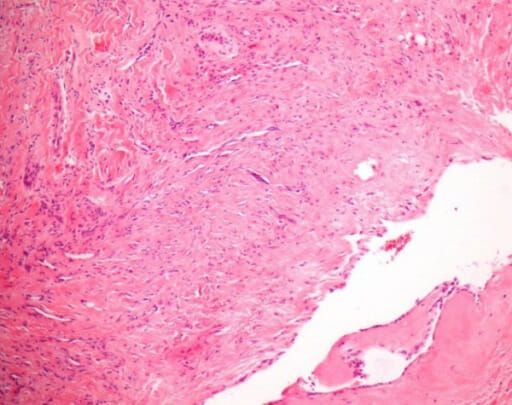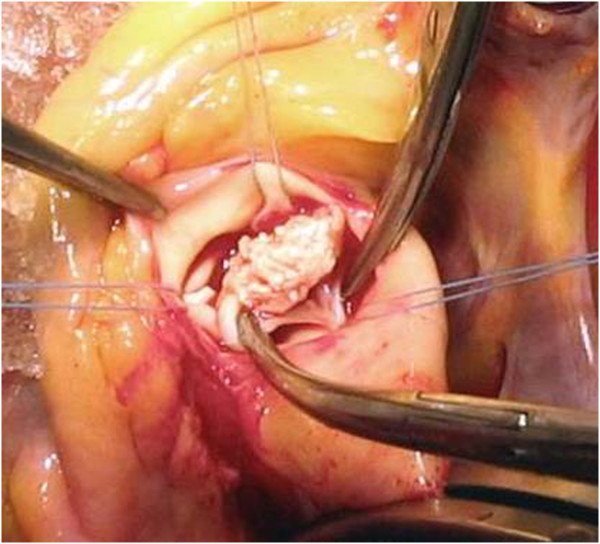Playlist
Show Playlist
Hide Playlist
Cardiac Case: 22-year-old Woman with Fever and Ankle Edema after Long-term Heroin Abuse
-
Cardiac Case 22-year-old Woman with Fever and Ankle Edema after Long-term Heroin Abuse.pdf
-
Reference List Cardiology.pdf
-
Download Lecture Overview
00:01 A 22-year-old woman who's addicted for a long time to intravenous heroin is admitted to the hospital because she's been having fever and loss of appetite, anorexia, weight loss, and peripheral ankle edema. 00:15 She looks chronically ill and cachectic that is wasted, blood pressure is low at 88/56, heart rate is fast at 105, and she's febrile at 39.5, normal being 37. 00:28 Her sclera, the white of her eyes, appear slightly jaundiced and when you listen to her cardiac exam, you'll hear a great 3/6 holosystolic, blowing murmur heard over the sternum without radiation. 00:42 So let's imitate that. Here's the normal heart sound, lub-dub, lub-dub, and here's the murmur over the sternum we hear lub-whoo-dub, lub-whoo-dub, lub-whoo-dub And this is the murmur of tricuspid regurgitation similar to the murmur of mitral regurgitation but the mitral regurgitation murmurs are best out here with the apex and the tricuspid valve is heard best over the sternum. 01:10 She has an enlarged liver, undoubtedly heart failure with congestion, and 2+ peripheral edema. 01:16 And her blood bilirubin levels are elevated saying that there is hepatic congestion and damage to liver and unfortunately her blood cultures grow Staph. Aureus which is one of the resistant forms of so-called 'MRSA'. 01:30 So, what's critical here? Of course, the history of intravenous heroin abuse, the needles aren't sterile, the heroin's not sterile. 01:37 She has symptoms that suggest an infectious process. 01:41 She looks chronically ill so this has been going on for a while. 01:45 Low blood pressure, high heart rate, a temperature. She's got signs of hepatic disease. 01:51 She's a little jaundiced, her bilirubin is elevated. She has an enlarged liver. 01:55 She has heart failure because of 2+ peripheral edema. 01:58 And she has a murmur that suggest tricuspid regurgitation. 02:02 And we mentioned this before, the elevated bilirubin numbers and of course she's growing Staph. 02:08 So, first task would be an echocardiogram and this shows a large vegetation on the tricuspid valve. 02:15 No surprise because she's been injecting non-sterile material into the right -- into the vein and then into the right side of the heart. The diagnosis? Tricuspid valve vegetation endocarditis secondary to Staphylococcal aureus. 02:31 So, we start intravenous vancomycin and cephalosporin. 02:35 Two antibiotics because it's a resistant organism. She gets that for 3-4 weeks. 02:42 She has a tricuspid valve replacement with a porcine heterograft that is a tissue valve. 02:47 She gets drug addiction counseling in the hospital. 02:50 Her intravenous antibiotic therapy and intense behavior modification therapy for her addiction continue after she leaves the hospital. 02:59 And she's told that a repeated infection to her prosthetic heart valve will almost certainly result in her death. 03:06 And that really injecting heroin again would be very likely fatal.
About the Lecture
The lecture Cardiac Case: 22-year-old Woman with Fever and Ankle Edema after Long-term Heroin Abuse by Joseph Alpert, MD is from the course Cardiovascular Cases.
Included Quiz Questions
A 22-year-old woman with a long history of intravenous heroin use presents to the hospital with fever, loss of appetite, weight loss, and peripheral ankle edema. On physical examination, she appears chronically ill and cachectic. Her blood pressure is 88/55 mm Hg, heart rate is 105 beats/min, and the temperature is 39.5°C. Her sclera appears slightly jaundiced, her liver is enlarged, and grade 2 peripheral edema is noted. On cardiac auscultation, a 3/6 holosystolic, blowing murmur is heard over the sternum without radiation. Laboratory studies show increased bilirubin levels. Echocardiography is performed and reveals large vegetations on the tricuspid valve. Which of the following pathogens is the most likely cause of this patient's condition?
- Staphylococcus aureus
- Streptococcus bovis
- Staphylococcus epidermidis
- Viridans streptococci
- Eikenella species
A 22-year-old woman with a long history of intravenous heroin use presents to the hospital with fever, loss of appetite, weight loss, and peripheral ankle edema. She is admitted. On physical examination, she appears chronically ill and cachectic. Her blood pressure is 88/55 mm Hg, heart rate is 105 beats/min, and the temperature is 39.5°C. Her sclera appears slightly jaundiced, her liver is enlarged, and grade 2 peripheral edema is noted. On cardiac auscultation, a 3/6 holosystolic, blowing murmur is heard over the sternum without radiation. Laboratory studies show increased bilirubin levels. Blood culture results show growth of methicillin-resistant Staphylococcus aureus, and an echocardiogram reveals large vegetations on the tricuspid valve. Which of the following is the most appropriate antibiotic choice for this patient?
- Vancomycin
- Amoxicillin and clavulanic acid
- Ceftriaxone
- Gentamicin
- Vancomycin, gentamicin, and ceftriaxone
Customer reviews
5,0 of 5 stars
| 5 Stars |
|
5 |
| 4 Stars |
|
0 |
| 3 Stars |
|
0 |
| 2 Stars |
|
0 |
| 1 Star |
|
0 |





